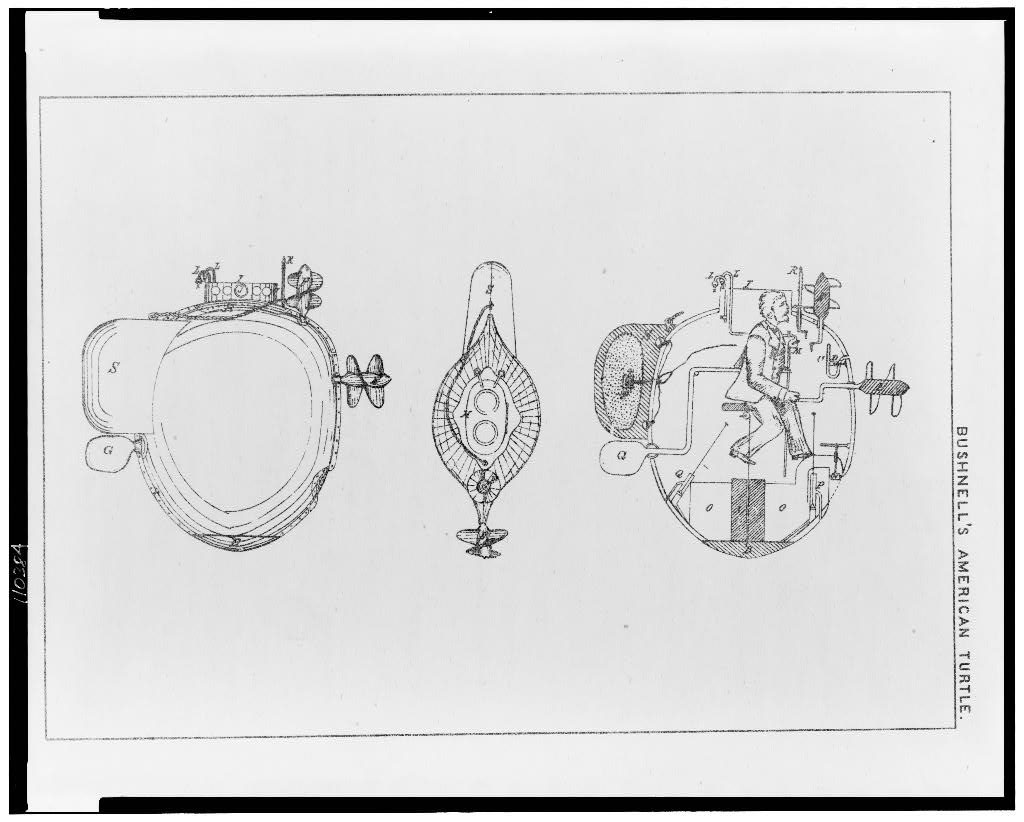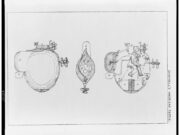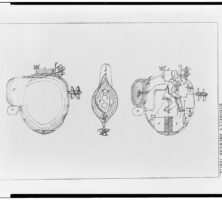David Bushnell is credited as the inventor of the submarine, which was first used to launch explosives against British ships during the American Revolution (1775-83). Under a different identity, the New England native settled in Georgia after the war and spent the rest of his life there.
Bushnell was born on August 30, 1740, in Saybrook, Connecticut, to Sarah Ingham and Nehemiah Bushnell. He worked on his family’s farm and spent his free time in the pursuit of knowledge. Accounts describe him as reticent, quiet, distant, and exceedingly private. When his father died, Bushnell sold his inheritance and moved to town, where he could prepare for higher education. Two years later, at the age of thirty-one, he entered Yale College (later Yale University) in New Haven.

Courtesy of Library of Congress, Prints and Photographs Division
While a student, Bushnell experimented with exploding timed gunpowder charges under water. During his final year at Yale, he spent his last penny constructing a manned submarine capable of employing weapons. Built entirely of oak beams, the elliptical craft resembled two conjoined turtle shells. Thus, the craft was given the name “Turtle.” His graduation in the summer of 1775 coincided with the beginning of the Revolutionary War, and some in the Continental Congress, including Benjamin Franklin, felt that Bushnell’s idea would be a useful weapon against the Royal Navy.
On September 6, 1776, the Turtle, piloted by Sergeant Ezra Lee of the Continental Army, was sent to attack the HMS Eagle off the coast of New York City, in an effort to break the British blockade. While Lee was not able to attach the explosive to the ship, he was able to detonate the charge. Though unsuccessful in the mission’s ultimate goal, the event proved that the submarine and its weapon were operable. After two more unsuccessful attempts, Bushnell determined that better-trained operators were required and turned his attention to using mines to strike the enemy. He constructed two mines and set them afloat in Black Point Bay, in Connecticut, on August 13, 1777. The captain of the HMS Cerebus avoided destruction by simply cutting the rope carrying the mines, but they did destroy a nearby schooner.
Bushnell reworked his design and tried again later in the year. This time, he devised a mine suspended by wooden kegs that would detonate on contact. In late December the kegs were sent down the Delaware River toward British ships at anchor near Philadelphia, Pennsylvania. Unfortunately, most of the fleet had sailed. While the mines were unsuccessful in destroying their intended targets, they did detonate, frightening the enemy into firing at any object floating in the river. The combination of submarine and floating mine attacks checked the dominance of the Royal Navy.
In August 1779 Bushnell was appointed a captain-lieutenant in the Corps of Sappers and Miners—a predecessor of the modern day Corps of Engineers—in the Continental Army. Later promoted to the rank of captain, he participated in the allied siege at Yorktown, Virginia, in the fall of 1781. With peace declared in late 1783 Bushnell was honorably discharged and returned to Saybrook. He abruptly left in 1787 under the pretext of traveling to France to continue his underwater experiments. Some rumors circulated that he died in the French Revolution; others suggested that he made a fortune and returned to America only to lose it all. No matter what the true circumstance of his departure, Bushnell was never known to correspond with his family again.
One of the original settlers of Columbia County, Georgia, in the late 1790s was a teacher known as David Bush. In 1803 Bush bought a lot in Warrenton, in Warren County. When Warrenton was incorporated in 1810, Bush was a commissioner, and by 1818 he was a practicing physician. Sometime in January or early February 1826, Bush died. In his will to the prime benefactor, George Hargraves of Augusta, Bush revealed himself as David Bushnell, inventor of the submarine. Found among his belongings after his death was “some curious machinery” that was believed to be a model for a torpedo.
Although Bushnell had been a close friend of prominent Georgia legislator Abraham Baldwin at Yale, it is unknown why he chose to relocate to Georgia and change his identity. Today, Bushnell is credited with the advent of submarine warfare and, in recognition of his contributions, his adopted state declared August 2, 2004, as David Bushnell Day.





